Nothing is more painful to a gardener than waiting all year for fruit or your vegetable crop to come in finally, and everything is looking beautiful looks like you’re going to have a great harvest, and right as things are turning ripe, birds come in, and they peck all of your fruits to death and ultimately destroy them it’s debilitating it’s demoralizing, and sometimes it just makes you want to quit and to combat, but we don’t actually want to kill any of the birds. We just want them to go find some other place to play.
To stop birds from destroying our garden we try to understand the following things,
Why did they destroy it in the first place?
How to prevent them?
also, some useless methods that won’t work.
Why are birds attacking your fruits?
Many people think birds attack their fruits because they’re hungry, but birds overwhelmingly attack your fruits because they are thirsty and need a water source. This is why bird damage tends to be worse in areas that have hot, dry summers, so if you live in inland areas, especially out west where it doesn’t rain a lot or at all during the summer, it is not uncommon for fruit trees to be completely decimated by birds desperate for seeking water.
So try to provide a clean water source by installing a bird bath we discussed the best and cheapest bird baths available in the market, you can check that here,
Also we discuss later in detail about the preventive measures you can implement to stop birds just read further to know.
How to prevent them?
So when it comes to protecting your fruits and vegetables from bird damage,
follow these steps
Keeping and maintaining birdbath
How birdfeeder works in our scenario?
Keep your fruit trees as low to the ground as possible
Why bird netting should be banned?
Keeping and maintaining birdbath:
Keeping a bird bath in the yard, the most important thing to remember is that birds are lazy, so if you give them a clean water source, they’re not going to go through the trouble and the risk of pecking fruits looking for water.

All the birds in the area are thirsty, just like you and me, and they don’t always have a proper place to go get a drink, so by providing these birds a nice fresh cool drink of water, your satiating their thirst and, therefore they’re not as prone to go peck at your fruits so this will give amazing results so give it a try, bird baths can be extremely cheap easy to build on your own you can go to the shop and buy a nice beautiful design, whatever it takes just get one installed in your garden, and don’t just set it and forget it, remember to change that water frequently at least once a day, you’ll be amazed when the birds actually sometimes sing to you as you change in that water.
We discussed some of the best and cheapest bird baths available in the market, you can check that here,
Placement of birdbath:
When it comes to the bird bath placement, you want to ensure that it is placed in a location that is easily accessible from your garden. You don’t want to keep it too far away so that the birds that are landing around your garden say, ” Hey, I’m not going to peck at these tomatoes or these figs or apples or peaches because there’s a birdbath” You want to make sure that the bird bath is easily accessible and visible from the garden. Don’t hide it and keep it out in the open.
Installing a bird feeder is the second tip to keep birds off your fruits and vegetables.
How Birdfeeder works in our scenario?
In your yard, birds are pecking at your fruits for water, and some of them want food, but here’s the important thing to understand fruits by weight are about 75 to 80 percent water, and what nutrients in them are very low. Fruits only contain fruit sugar, vitamin C, and a bit of beta-carotene. They don’t contain a lot of nutrition, so birds are not going to waste their time eating fruits unless they have no other option.
As a source of calories, you want to provide them nuts and seeds because they are very calorie dense they contain very little water, and they contain a lot of trace vitamins and minerals and fatty acids,
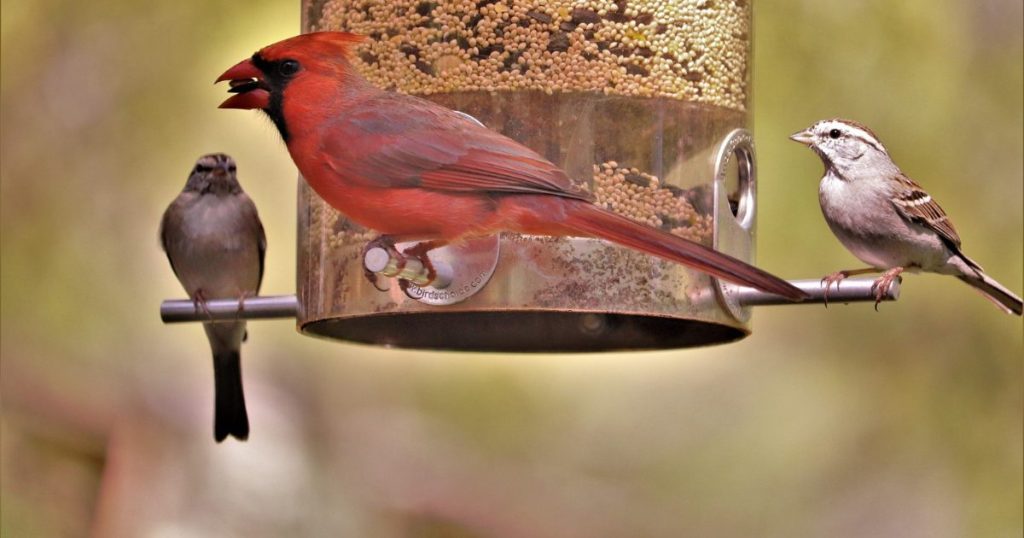
birds consume tons of calories by flying, and little bits of fruit sugar is better for them when they can have these high-calorie nuts and seeds.
Also, make sure you provide a big generous bird feeder. Make it very easily accessible and visible to them. Get one that’s bright yellow, and don’t hide it from the birds. Put it in a wide-open area.
Birds never land on deck or peck another fruit because they have this great food source. So why would they eat low-calorie fruits when they can have that high-calorie-dense feed just sitting there? That’s the way you have to think when it comes to birds.
Does this method really keep bird away?
We have heard real-life incidents where birds were attracted to feeders, not picking even a single fruit, so it’s important to have an attractive and provide a good food source.
The third tip is,
Keep your fruit trees as low to the ground as possible
keeping fruit trees pruned and trellised very low to the ground will keep birds and squirrels off because birds feel very insecure sitting very low with all the predators attacking birds on the ground.
So if you have these large fruit trees very high off the ground, birds will feel comfortable perching and nesting very high up off the ground.
To avoid that, keep your fruit trees very low by trellising them or planting dwarf varieties, or keeping them pruned very low to the ground. But, of course, there’s no way a bird is going to land this low to the ground because a cat could get them, so remember that the lower you keep your fruit trees, the less chance of them being raided by birds or squirrels because those kinds of animals they don’t like being low to the ground.
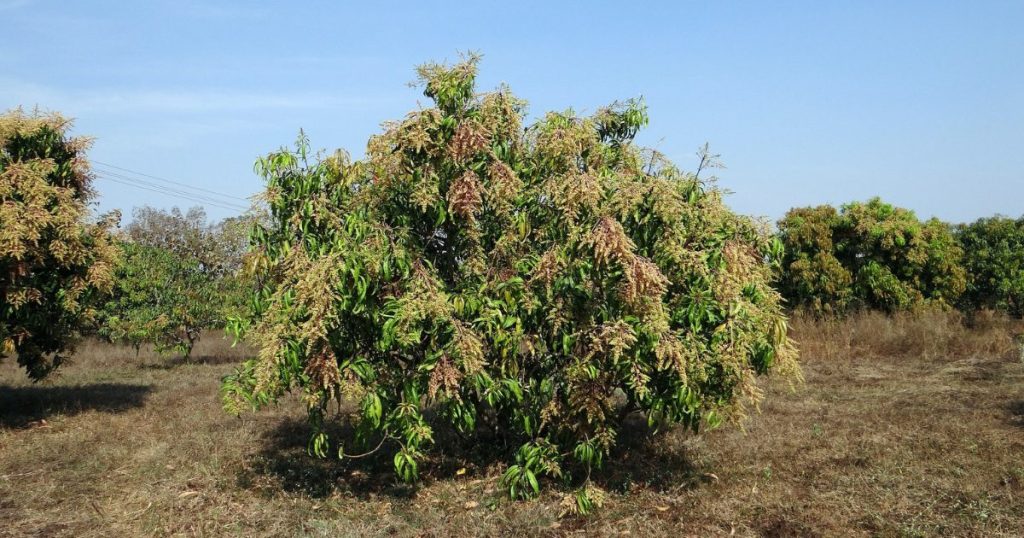
Bag them in green organza bags:
These organza bags come in varying shapes and sizes that you can size based on the size of the fruits that you’re growing. The reason why these are so effective is not only because the netting itself is a deterrent for the birds.

But also, the green color acts as camouflage. There’s a reason why birds are attracted to brightly colored fruits that indicates that they are ripe and full of sweet juices. They know that when they’re green, they don’t have a lot of water, and they don’t have high sugar content, so it’s not worth their time for them to go ahead and attack the fruits if you cover
You can get organza bags from this amazon link.
We strongly recommend this. Give these a shot; also, they’re very cheap.
Plant Abundance
Plant more than you need, and plant lots of variety. That way, if one of your plants gets attacked by Birds or other wildlife from the area, insects, or even disease, you’ve got to back up and hopefully even got a backup for your backup. A diverse garden with lots of different choices encourages grazing for many animals that come in rather than just focusing on one particular plant, so not only are you hoping to guarantee that you’ll be gaining a fruitful harvest every year, but you’ll be able to share a little bit with the wildlife without it being too big a deal.
Utilize manual controls
You can use a combination of brightly colored rubber snakes, noisy moving wind chimes with a bonus of scary eyes, and a large tough balloon with scary eyes drawn on. But birds are pretty smart. If we don’t move the items around, they’ll realize these deterrents don’t move unless we change them in the garden. So you can put reflective streamers, or pinwheels, in that case.
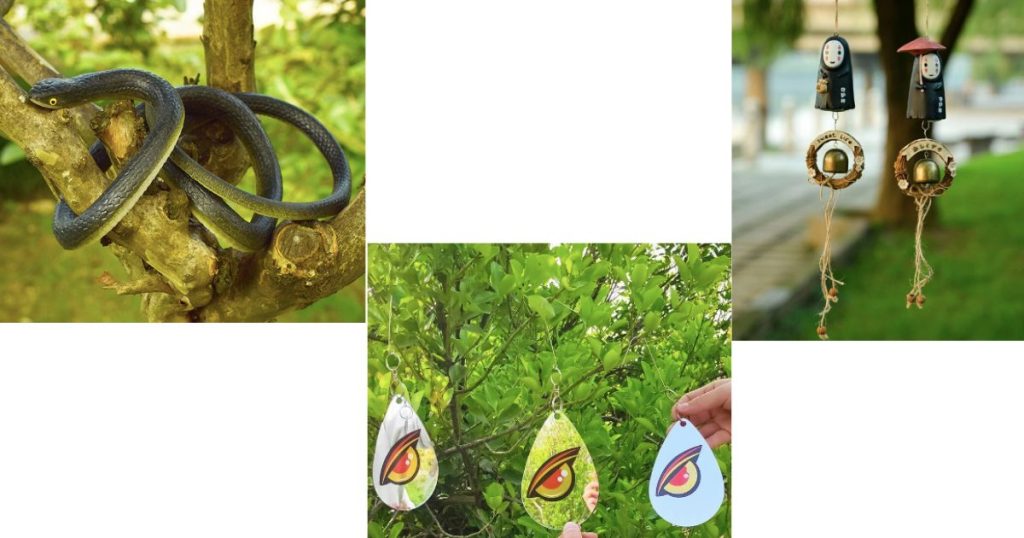
There is another product called flash tape that you can tie up in your fruit trees, and it will blow in the wind kind of like a streamer, and the shiny surface on this flash tape will reflect the light in different directions as it’s blowing in the wind and the birds will perceive this as movement and tend to stay away.
Sometimes a good scarecrow can do the trick. Maybe you can build one that actually blows in the wind as well and creates movement with streamers and all of that.
Also, a well-trained dog or two can do a really good job keeping at bay some of the larger birds and even other wildlife too may come into your garden.
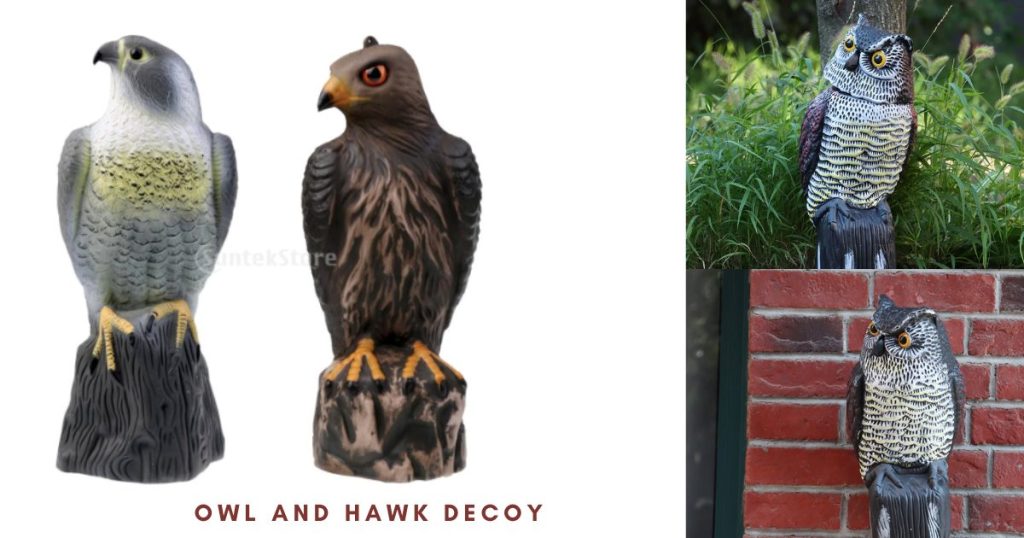
We will discuss about one such killer method that should be avoided, also first we know about some failed methods and what should be done to avoid birds destroying your garden.
Failed methods
We discuss about some failed methods and what should not be done to avoid birds also we know about a killer method that should be avoided.
Bird Tape
It’s kind of a reflective tape. As it wiggles in the wind, it reflects and kind of makes the birds feel uncertain. And so you just tie it to the little tree branch and hope that it wiggles. The problem is it was getting wrapped up in the tree and stopped being effective and stopped moving.
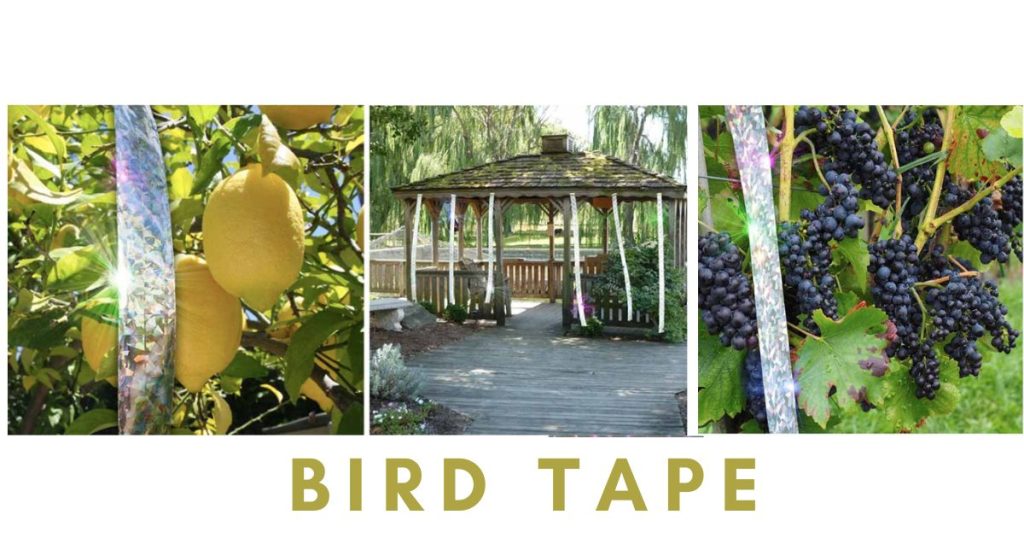
Old CDs (compact discs)
You know those things well. They’re reflective on one side so that you tie it to the tree, and it would wiggle around in the wind, and the reflection would make birds feel uncertain. But tried that as well, and it just got wrapped up in the tree and stopped being effective.
So let’s discuss something that would deter birds in an effective way.
We have a few criteria for it.
- Wanted it to be easy.
- Want it to be portable, it could be easily deployed when the fruit is about to be ripened and ready to harvest.
- Want this thing to be effective, and in order to be effective, that thing needs to play to a bird’s weakness. It’s interesting. Their weakness actually is from one of their strengths.
To do that, first, understand why your birds attacking your garden.
Why bird netting should be banned
When you’re building up a larger garden with more diversity. In the beginning, you may need to do more protection. One of the most common products to do this is bird netting, it’s very easy to install, easy to take down, and it’s reusable, but it should never be used.
Please don’t use bird netting in the garden. Bird netting has been known to entangle snakes, lizards, hummingbirds, songbirds, raccoons, and skunks. Of course, these were only doing their job patrolling the area to help keep toads and frogs from overtaking the land. If found early, we can save them. However, much of the wildlife is not so lucky. Many animals have become hopelessly entangled and die in the net before they can be rescued. So while netting is convenient and effective, it isn’t worth the lives of the wildlife it takes down. So please take it down.
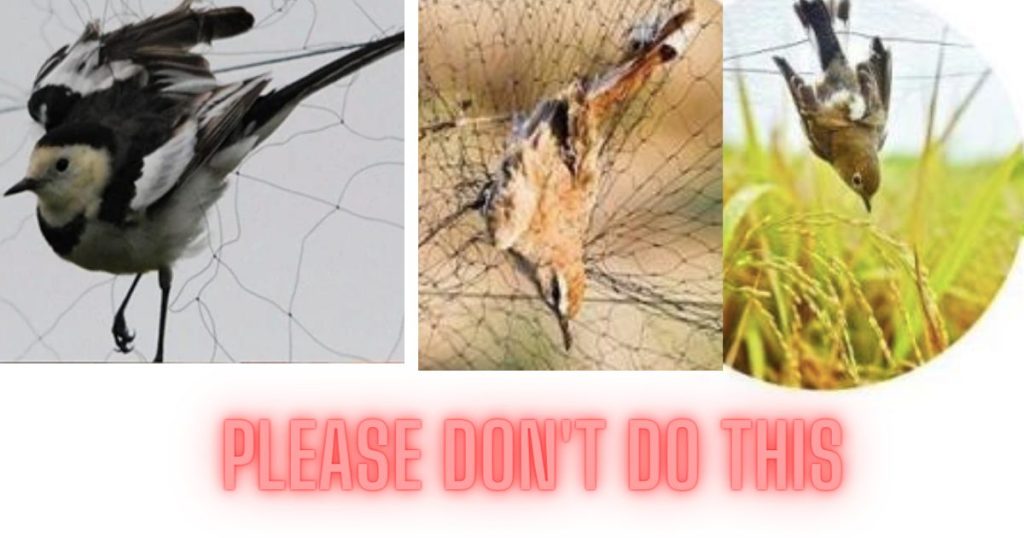
On a side note, be willing to share some of your harvests with the wildlife in the area. You know they’re part of this planet, and just like us, we’re all part of a balanced ecosystem when we work together.
And in a lot of cases, humans have come in and occupied some of the open space lands, and it’s easy for us to forget about all the rest of the wildlife out there, how interconnected everything is, and how a balanced system is, really take that into account we just encourage you if you lose some of your harvests don’t fret over it, it’s a much more relaxed approach, it’s a less stressful form of gardening when you take that type of a mindset.
And only when things got way too out of balance and lost too high a percentage of crops, then resort to manual controls.
And just remember any challenges or perceived setbacks you have in the garden. These can all be chopped up into learning experiences that can actually help you to become the best gardener. You could be better equipped to handle these situations when they arise.
Using these tips, you can substantially decrease, if not eliminate, bird damage in your garden, but these may need to be 100 percent foolproof. You may still have the odd fruit or vegetable pecked for water or food.